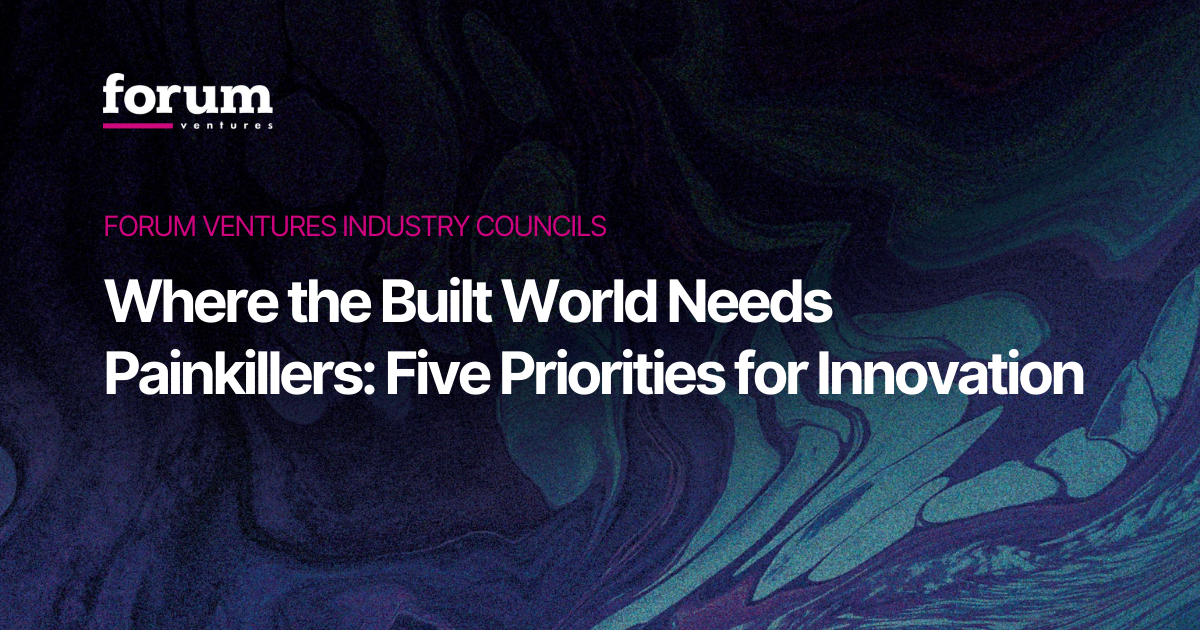In my recent piece, Where Health Systems Feel the Friction: Three Signals for Founders, I wrote about three areas where our Health Tech Council leaders see the most pain:
- workforce shortages,
- Medicaid and underserved populations, and
- the difficulty of making preventive care models work financially.
Now those same issues are front and center in Washington. CMS has announced a $50 billion Rural Health Transformation Program, funding state-led efforts to tackle exactly these issues. Below, healthtech industry council member Zain Ismail lays out what the program looks like and how founders can align their solutions to this wave of non-dilutive funding.
This was originally posted on Zain's Substack, click through to subscribe for more!
--
Hey Founders and VCs,
If you’re building in healthcare, stop what you’re doing and pay attention. There’s a massive, $50 billion tailwind heading straight for the rural health sector, and it’s about to create a huge new market for innovative, early-stage solutions.
The government isn’t just dipping its toes; it’s funding a full-scale digital and operational transformation.
Here’s the breakdown of the opportunity, courtesy of the Centers for Medicare and Medicaid Services (CMS).
The Deal: $50 Billion for Rural Health Transformation
Under the new Trump Administration and as part of the broader MAHA (Make America Healthy Again) movement, CMS is launching a game-changer: the Rural Health Transformation Program (RHT).
The core mission is simple: inject billions of dollars into state-led efforts to dramatically improve rural health infrastructure, access, and outcomes. We’re talking about a significant, dedicated push to turn rural America into a proving ground for the next generation of healthcare technology and delivery.
The money is staggering: $50 billion is slated to be allocated to approved states over five fiscal years, starting in 2026 and running through 2030, with $10 billion available annually.
Where to Focus: The Five Opportunity Domains
CMS is looking for solutions across five very specific domains. For startups, these aren’t just bullet points—they are five distinct, federally-funded go-to-market strategies.
- Make Rural America Healthy Again: This is the call for preventative and outcomes-driven solutions. Think root causes, chronic disease management, and behavioral health. If your startup is focused on evidence-based virtual care for mental health or complex chronic conditions, this is your entry point.
- Sustainable Access: This domain is all about efficiency and collaboration. Rural providers need help becoming long-term, viable access points. We’re talking shared operations, coordinated technology, and regional system integration. B2B SaaS focused on hospital/facility collaboration, efficiency, and supply chain is key here.
- Workforce Development: The rural staffing crisis is real. Funding here targets recruitment, retention, and allowing all providers—from pharmacists to community health workers—to practice at the top of their license. Solutions for remote staffing, training, upskilling, and credentialing should be laser-focused on this.
- Innovative Care: This is the home for novel delivery and payment models. CMS wants to spark the growth of value-based arrangements, incentivize ACOs, and shift care to lower-cost settings. If you’re building a platform to enable ACOs or launching a virtual-first model for specific populations, this is your category.
- Tech Innovation: The digital health mandate. This domain covers everything from promoting efficient care delivery to improving data security and access to digital health tools. Telehealth infrastructure, remote patient monitoring (RPM), cybersecurity for rural hospitals, and data sharing platforms should be leveraging this focus.
How the Money Flows (The Partner Channel)
The program structure ensures wide distribution while also rewarding states with the highest need:
- 50% of the $10 billion annual allocation will be distributed equally among all approved states.
- 50% will be allocated based on factors determined by CMS, including rural population size and the proportion of rural health facilities in the state.
Crucially, the states are the applicants. This means the government is entrusting state-level entities to identify and deploy the best solutions.
Advice: How Might Early Stage Startups Get Involved?
Here is the essential playbook for founders: You are not the direct applicant, but you are the solution.
Your job is to make it easy for your state-level partners to secure funding for your product.
- Identify Your Champions and Get Vocal: Reach out to the health systems, ACOs, Federally Qualified Health Centers (FQHCs), and state hospital associations who will be partnering with the state on their application. Encourage them to raise their voice and actively support the state’s bid.
- Map Your Solution to an RHT Domain: Do the homework for your partner. Clearly communicate exactly how your product or service aligns with one or more of the five funding aims. Don’t just say your solution “improves health”—connect it directly to “Workforce Development” or “Sustainable Access.”
- Pre-Package the Budget: This is the most critical step. Show your partners exactly what a supporting budget for your collaboration would look like. Make it a simple line-item they can drop into their state application. The goal is to be a strategic partner who is aware of the funding landscape and helps them find the money to support your work together.
This $50 billion program is a massive signal that the rural health market is officially open for disruption. Founders, you have a clear mandate and a clear source of non-dilutive capital to pursue.
Go help your partners win.
Learn More About it Here
Program Website: https://www.cms.gov/priorities/rural-health-transformation-rht-program/overview
Zain Ismail is a healthcare innovator and content creator.
He is a healthcare strategy advisor with experience leading innovation in health systems in Canada, the United States, and Kenya.
In 2021, Crain’s Detroit Business named Zain a “Notable Rising Star in Healthcare.”
His views are his own and do not necessarily reflect the views of the organizations he represents.
Connect with Zain on Linkedin. Contact Zain at zain at zainismail dot com.
.avif)




.svg)



.avif)

